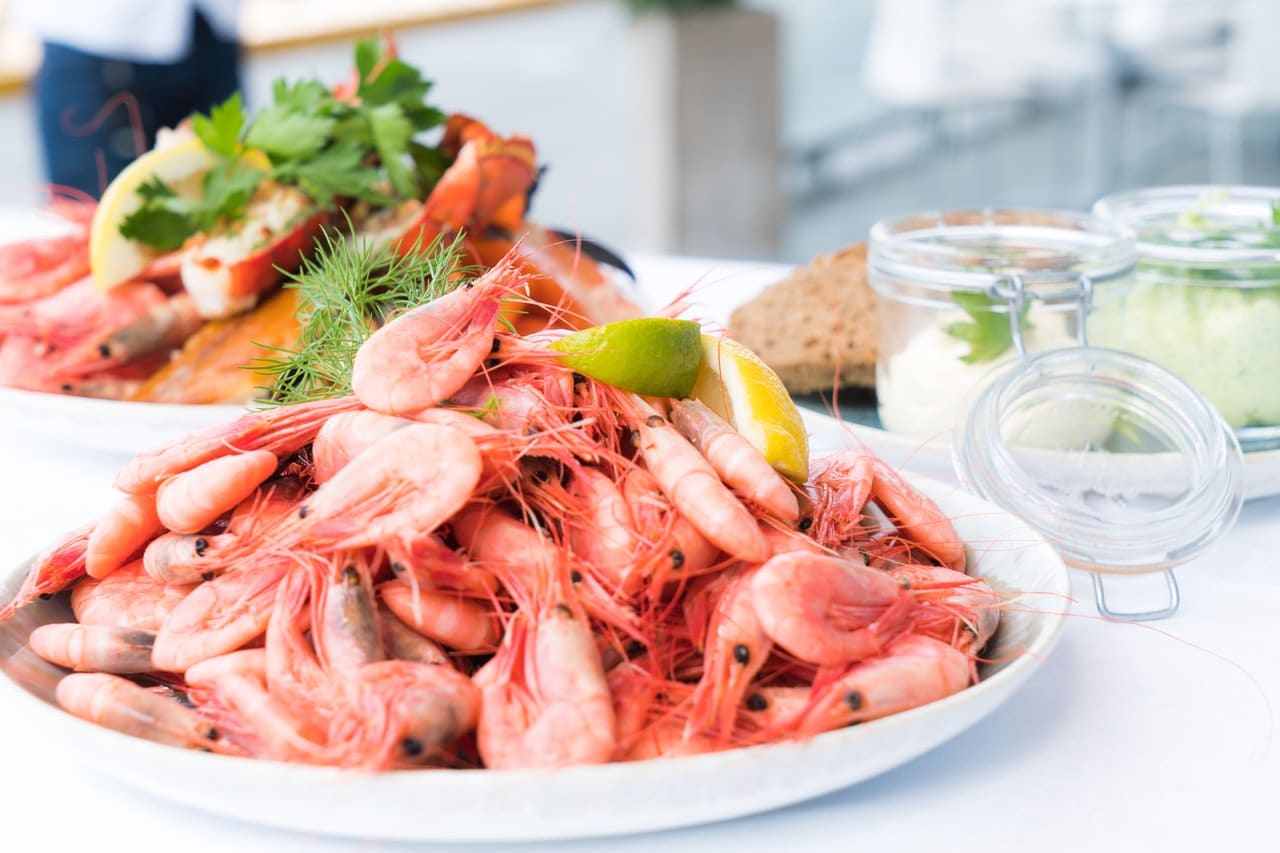When it comes to flavor, shrimps are king. That’s why a lot of people are interested in knowing how to steam shrimp with the shells on, or how to cook shrimp in the microwave. You need to know how to steam shrimp with heads on, and how to steam shrimp in a rice cooker if you want to be a master at preparing shrimp. Here we go!
How to Steam Shrimp with the Shells On
Using a steamer is the most straightforward way to prepare shrimp. It is tough to season shrimp even after they have been thawed out, so we recommend putting the bulk of your seasoning after you have steamed them. Place your shrimp in the steamer basket and steam them for about six minutes. This applies to batches of sixteen to twenty shrimps at a time. We do not recommend steaming more than this quantity unless you have a huge steamer at home (the kind that they use in restaurants). Crowding the shrimps in a small steamer basket might mean some of them will be undercooked.
Some people don’t mind preparing their shrimp frozen, because they thaw out so quickly it doesn’t matter. But for those who follow the principle of always thawing out meat and seafood before preparation, you can put your shrimp in small zip lock bags and placing them in water. Unless you have several kilograms of shrimp in the bag, it shouldn’t take long to thaw at all. Thawing time in the water will take about thirty minutes, give or take. The important thing here is that you prepare the shrimp quickly after thawing because raw seafood at room temperature isn’t the ideal setup. Seafood has been known to develop bacteria rapidly at room temperature.
Can you steam shrimp even without a steamer?
Yes, this is possible. The second-best option for cooking shrimp is by boiling them. However, you need to be careful with boiling because it is easy to overcook shrimp, and if you overcook them, you will end up with a rubbery batch of shrimp. You have two options: boil the shrimp and then season, or season the shrimp as you cook it with a marinade. A marinade can be as simple as garlic and light soy sauce. Shrimps are already flavorful as they are, so even a small amount of seasoning goes a long way. People who have been working with shrimp for a long time will attest to this.
If you have never prepared shrimp before, here are the steps:
- Assuming you have a pound of frozen or thawed shrimp, make enough water to submerge your batch of shrimp.
- Season the water with some kosher salt, freshly squeezed lemon juice, and black pepper. Feel free to adjust the level of seasoning, depending on your preferences.
- Let the water boil. Add the fresh shrimp to the water.
- Cover the pot and cook the shrimp for no more than five minutes. Check on the shrimps’ doneness from time to time.
- When the shrimp begins to turn orange, turn off the fire and remove the shrimp from the water. The remaining heat in the shrimp will continue to cook the flesh of the shrimp. Remember, shrimp are relatively tiny, unless you are cooking freshwater prawns (that are not technically shrimp), so they need less heat than when we are cooking larger pieces of seafood.
- If you have another marinade in mind, make sure that you have prepared that marinade beforehand. You can now submerge the shrimp in the marinade for about ten minutes, so the cooked shrimp will soak up the flavors.
- Remove the shrimp from the marinade and serve. You may add a small quantity of marinade to the final plating if you wish.
Shrimp Tips
- Like we said before, it is easy to overcook shrimp because they’re fragile as seafood. Temperature control and monitoring are essential if you want to produce perfectly tender and flavorful shrimp.
- Always taste the marinade that you used to boil shrimp before serving it. Sometimes, in our effort to compensate, the marinade becomes super salty. It’s alright when you are cooking the shrimp because shrimp marinade is often saltier than regular marinades. After all, the shrimps are cooked with the shells on. However, if the marinade will be served as is, those consuming the marinade may find it too salty for their liking.
- Avoid steaming or boiling shrimp without the shells on because they will turn rubbery very quickly. The shells provide us with a little elbow room when we are cooking shrimp. Cook with shells off only when you have mastered the correct temperature and timing. Otherwise, leave the shells on.
- You can devein shrimp without removing the shells entirely by cutting the back of the shrimp. Start cutting from the tail area, moving up gently to the head section. You can then cut the shrimp and devein it. This process is usually not necessary for smaller shrimps. Some people find the vein off-putting, but others just keep it on. Deveining or not is purely a personal preference.
- If you are at a loss as to what to use when seasoning shrimp, feel free to use some Cajun seasoning or other seasoning mixes, seafood mixes have similarities in composition, but each brand offers something different to the table.
- After cooking and seasoning, you may chill the shrimp before consuming it. During this time, you can start busying yourself with creating a nice dip for your shrimp, especially if it is going to be paired with cocktails.
- If all you have right now is a microwave oven, you can use that as well for your shrimp. However, we recommend that you do it in small batches of five to seven shrimp at a time because boiling water is explosive inside a microwave oven, and there is the risk of injury.

